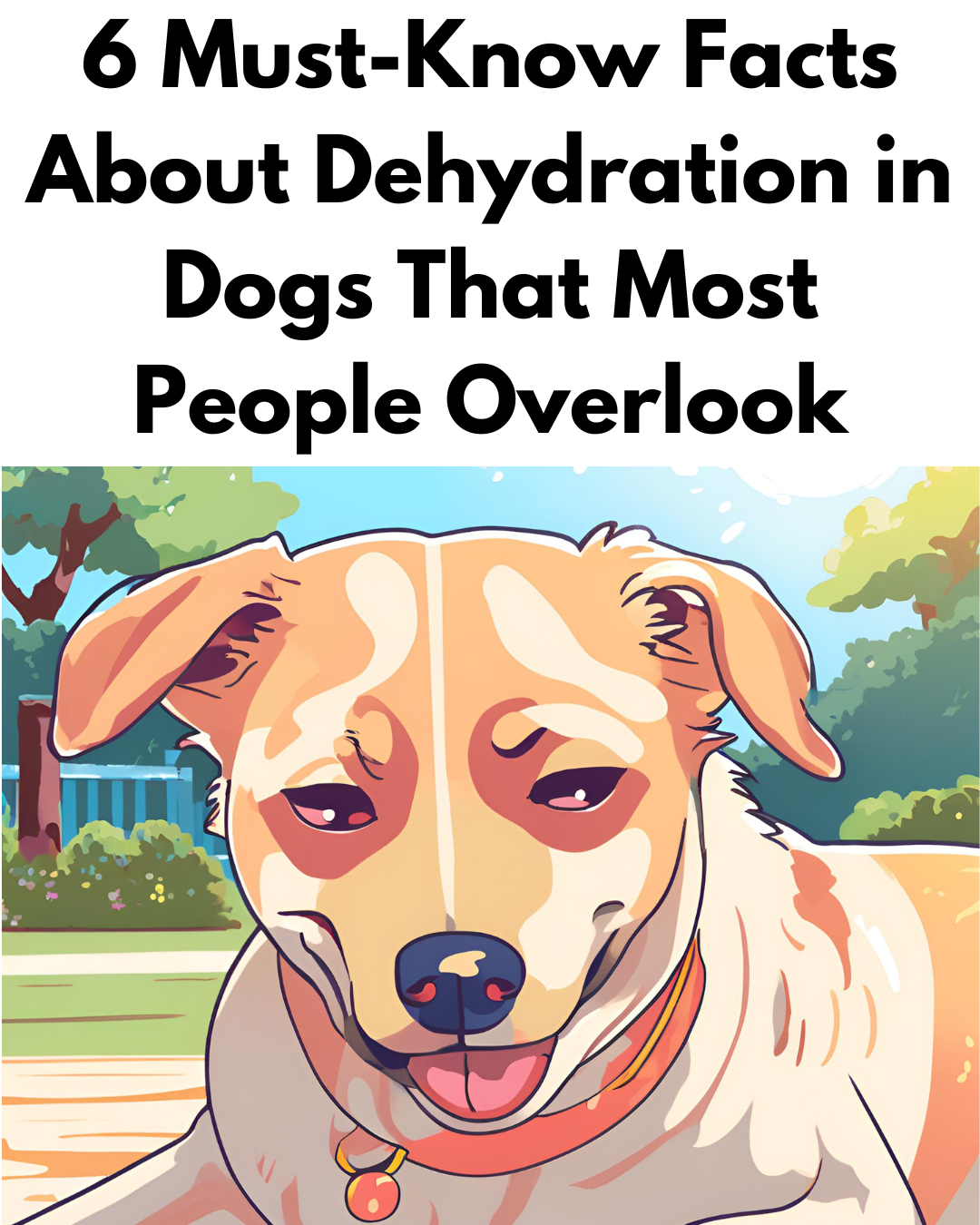When it comes to the well-being of our dogs, hydration is often overlooked. Many owners believe their pets are drinking enough water, but the truth is, dehydration in dogs is more common than most realize. Recognizing the subtle signs and understanding the nuances of canine hydration can make a significant difference in your dog's health and happiness. Here are six essential facts about dehydration in dogs that every owner should know, even if they think they have it all figured out.
Dehydration Is More Than Just Thirst
For many dog owners, dehydration simply means a lack of water. However, dehydration encompasses more than just not drinking enough fluids. It involves a deficit in the body’s essential electrolytes and can affect various bodily functions.
Understanding Electrolytes:
Electrolytes like sodium, potassium, and chloride are crucial for maintaining fluid balance, muscle function, and nerve signaling. When your dog is dehydrated, it's not just water they're losing, but these vital minerals as well.
Signs Beyond Thirst:
Look for signs such as dry gums, sunken eyes, lethargy, and loss of skin elasticity. You can test skin elasticity by gently pulling up on the skin at the back of your dog's neck. If it doesn’t snap back quickly, your dog may be dehydrated.
Environmental Factors Play a Huge Role
We often underestimate how much the environment affects our dog's hydration needs. Hot weather, dry climates, and increased physical activity can all lead to dehydration faster than you might expect.
Seasonal Changes:
During summer, dogs are more prone to dehydration due to higher temperatures. Always ensure your dog has access to fresh water and shade. In winter, central heating can dry out the air, increasing the risk of dehydration as well.
Travel and Altitude:
If you're traveling with your dog, especially to higher altitudes, their hydration needs might change. Higher altitudes can increase fluid loss through respiration, so be mindful of offering water frequently.
Certain Breeds Are More Susceptible
Not all dogs have the same hydration needs. Some breeds are naturally more prone to dehydration due to their physical characteristics or health predispositions.
Brachycephalic Breeds:
Dogs with short noses, like Bulldogs and Pugs, often have difficulty breathing in hot weather, leading to increased panting and fluid loss. These breeds require extra attention during warm months.
Active and Working Breeds:
Breeds like Border Collies, German Shepherds, and other working dogs that are highly active can lose more water through panting and sweating from their paws. Ensure they have frequent water breaks during vigorous activities.
Diet Can Influence Hydration Levels
What your dog eats can significantly impact their hydration status. Dry kibble diets, for example, contain very little moisture compared to wet food or raw diets.
High-Moisture Diets:
Incorporating wet food or fresh fruits and vegetables with high water content can help maintain your dog’s hydration levels. Foods like cucumbers, watermelon (without seeds), and celery are great options.
Balanced Nutrition:
Ensure your dog's diet is well-balanced with adequate levels of electrolytes. Some commercial dog foods are formulated to support hydration, so look for those with added electrolytes and consider them as part of your dog's regular diet.
Hydration from Food:
Dogs get a significant portion of their hydration from their food. This is why relying solely on water intake isn't sufficient. Wet foods, homemade meals, and certain fruits and vegetables can contribute significantly to your dog's overall fluid intake. Dry kibble, on the other hand, provides minimal moisture, making it crucial to ensure your dog gets enough water throughout the day.
Health Conditions Can Mask Dehydration
Certain health conditions can either mask the symptoms of dehydration or exacerbate them. It's crucial to be aware of these conditions to manage your dog's hydration effectively.
Kidney Disease:
Dogs with kidney disease often have increased water intake and urination. Despite drinking more water, they can still be dehydrated because their kidneys aren't conserving water effectively.
Diabetes:
Diabetic dogs can exhibit similar symptoms, with increased thirst and urination. Regular vet check-ups and monitoring your dog’s hydration levels are vital if they have diabetes.
Gastrointestinal Issues:
Vomiting and diarrhea are direct causes of dehydration. If your dog has gastrointestinal issues, it’s essential to replenish their fluids promptly.
Proactive Hydration Strategies
Being proactive about your dog's hydration can prevent many health issues before they start. Here are some strategies to ensure your dog stays well-hydrated.
Hydration Routine:
Establish a daily hydration routine. Keep water bowls in multiple locations around your home, especially in areas where your dog spends most of their time.
Encouraging Drinking:
Some dogs are picky about their water. Ensure the water is fresh, cool, and clean. Consider using a pet water fountain to encourage drinking, as many dogs prefer running water.
Hydration Supplements:
There are various hydration supplements and electrolyte solutions available for dogs. These can be especially useful during hot weather or after vigorous exercise. Always consult your vet before introducing new supplements.
Conclusion
Understanding and addressing dehydration in dogs is a critical aspect of pet care that often goes unnoticed. By recognizing the signs, considering environmental factors, accounting for breed-specific needs, monitoring diet, and being aware of underlying health conditions, you can ensure your dog remains healthy and hydrated.
Proactive hydration strategies not only prevent dehydration but also contribute to your dog's overall well-being. By integrating these practices into your daily routine, you can provide your dog with the best possible care, ensuring they lead a happy, healthy life.
Remember, staying informed and vigilant is the key to preventing dehydration and its potential complications. Your dog relies on you for their health and hydration, so make it a priority and take these facts to heart. Your furry friend will thank you with wagging tails and joyful, hydrated days ahead.


